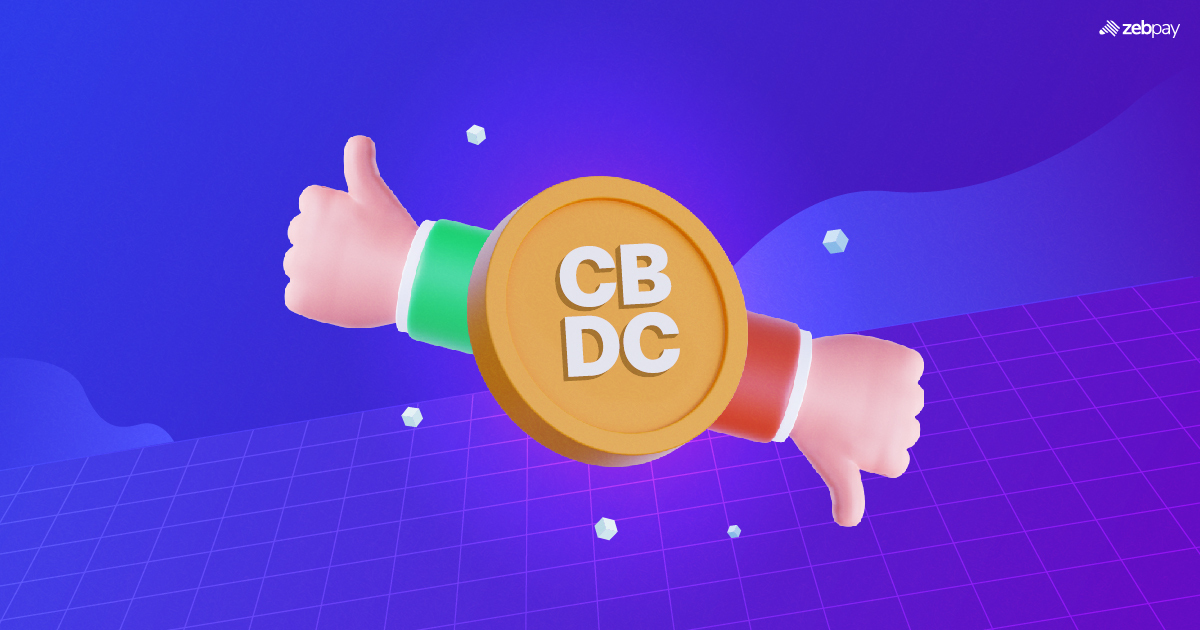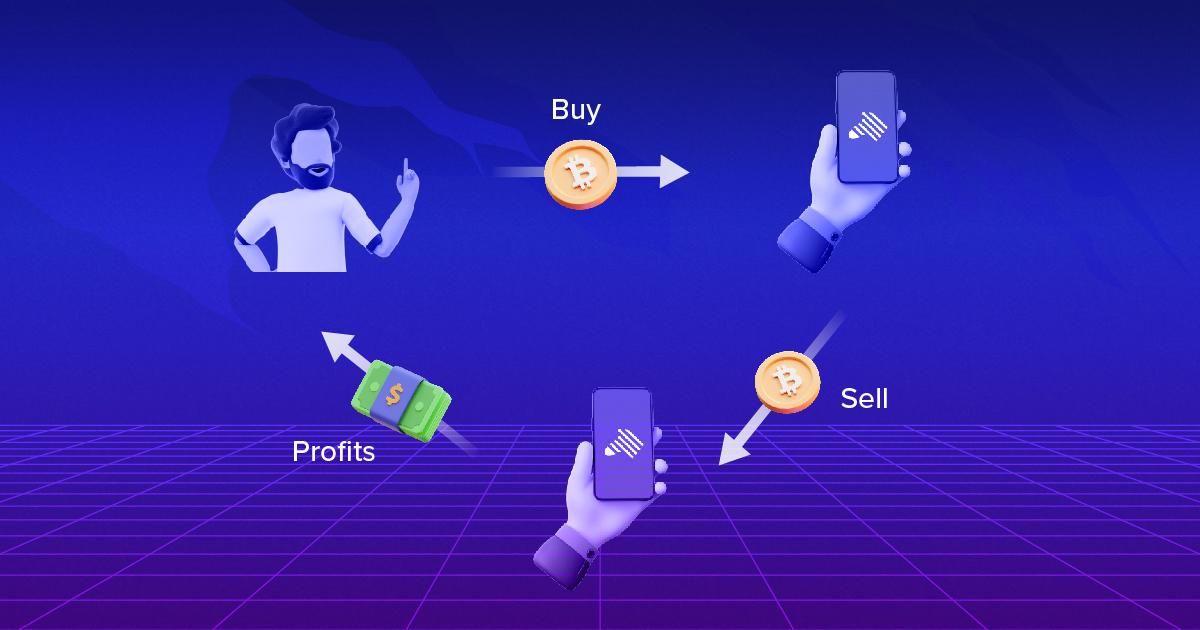26 October 2022 | ZebPay Trade-Desk
Cryptos are digital assets created and managed using cryptographic algorithms. There are different types of crypto assets. Bitcoin (BTC) is probably the most well-known crypto, but thousands of others have been created over time. This also includes stablecoins, crypto assets whose value is linked to fiat currencies, debt securities or commodities such as gold. As crypto prices correct and the greed and fear index rises again, it is important to understand that the broader impact of crypto assets goes beyond daily price swings. Crypto use cases and their underlying blockchain technologies are evolving exponentially. The huge economic impact of crypto assets on the global economy crosses national borders across industries.
Upside of Crypto
Crypto assets have advantages and disadvantages, like any tool or technology. The positive effects of crypto assets are profound. Arguably one of the biggest advantages is accessibility. Crypto can be used without the intervention of third parties, such as banks. The status quo of the current financial system has arguably failed many people around the world. More than 1.7 billion people are unbanked. Due to their accessibility, crypto assets can promote financial inclusion worldwide. For underserved and unbanked populations (one billion of whom own cell phones), the use of crypto assets offers an opportunity for financial inclusion. Therefore, it can be argued that crypto assets are inherently good for the economy.
Cryptos like BTC have traditionally been considered a hedge against inflation. The limited supply of BTC and its decentralised nature are believed to help increase the value of readily available BTC and those that have not yet been mined over time. The price declines and high inflation rates may raise some questions as to whether BTC will meet the high expectations of financial inclusion and hedge against inflation. One might want to differentiate between “owning” BTC and “using” it.
Is BTC seen as a means of payment that could meet the needs of a real economy, or is it seen as an investment vehicle to hedge against inflation? Depending on this answer, it can be analysed whether crypto assets work as a hedge. Alternatives also play a role. Some may choose to only get exposure to well-hedged stablecoins. And whether crypto assets are valid means of escaping rising inflation depends on whether they are seen as real alternatives to (failed) monetary policy. A BTC maximalist may argue that allowing an endless supply of money after 1971 and certainly after the 2008 financial crisis has been proven not to meet the needs of a true economy. High global inflation rates could fuel curiosity and the need for crypto assets. In the last ten years, people living in Venezuela, Lebanon, Turkey, or Argentina were five times more likely to say that they planned to use digital assets as compared to those who experienced less than 50% inflation over the same period.
Few Debated Downsides of Crypto
Just like cash, it’s no surprise that some cybercriminals are using crypto assets. Interestingly, the growth of legitimate crypto usage far outstrips the growth of criminal usage. The share of illicit activity in crypto transaction volume is very small, with transactions to illicit addresses accounting for just 0.15% of crypto transaction volume in 2021.
Next up is the claim that crypto assets are bad for the environment. In particular, BTC’s Proof-of-Work (PoW) consensus mechanism is said to have negative impacts (environmentally and economically). However, studies show that BTC contributes 0.08% to global CO2 emissions. In turn, BTC stimulates an entire sector and the financial inclusion of millions of people around the world.
Another downside is something most crypto assets face: volatility. Economists who view “money” through a more traditional lens may argue that crypto assets are unsuitable as a means of payment and that users are at greater risk. Economists may also argue that the value of crypto assets is not guaranteed due to a lack of involvement from commercial or central banks. An economist may argue that a central bank digital currency (CBDC) could be a good solution since governance remains in the hands of the central bank
Crypto markets can be extremely volatile, but things look different when the performance of crypto is viewed in a longer time frame. For example, looking at BTC’s logarithmic chart instead of the linear chart shows that volatility and drawdowns have remained fairly constant over time.
The downward pressure in crypto markets may correlate with a slide in traditional markets and geopolitical factors. Crypto investors are going through tough times. The financial climate has changed significantly. High inflation, for example, is causing central banks to adjust their policies. They are raising interest rates, making the financial markets tighter. For example, rising interest rates make it more favourable to invest in bonds. When equity markets correct, risk-off strategies also dampen crypto investments.
Learnings and What lies Ahead
The correlation of crypto market caps with traditional markets indicates institutionalisation, but that’s not necessarily a bad thing. It indicates acceptance which is the first step towards broader growth of crypto assets and their underlying technological base. Prominent thought leaders argue that the crypto market evolves in cycles and that, from an outside perspective, these cycles can appear chaotic. But in reality, there is an underlying logic in which prices, industry developments and innovations are linked in a positive feedback loop.
While blockchain and crypto assets are fundamentally understood as “trusted” technologies, trust remains key wherever people interact. The crypto market is not only influenced by the economy in general, but it can also have profound effects on the economy itself. Recent Naascom reports show tremendous growth in the number of Web 3.0 startups being set up in India. More innovation will lead to employment and improvements in products and services. Companies such as Meta and Google are actively venturing into crypto and web 3.0. With industry stalwarts stepping into the game the other might soon follow.
Because innovation and pricing are inseparable, and the early-stage development of the crypto economy offers much-untapped potential, the crypto economy has the capability for breakthrough economic innovations. Many of those working in the industry have a belief that strong projects will endure during temporary corrections and that the crypto winter is paving the way for a new wave of future innovation.
Disclaimer: This report is not intended to be relied upon as advice to investors or potential investors and does not take into account the investment objectives, financial situation or needs of any investor. All investors should consider such factors in consultation with a professional advisor of their choosing when deciding if an investment is appropriate. The Company has prepared this report based on information available to it, including information derived from public sources that have not been independently verified. No representation or warranty, express or implied, is provided in relation to the fairness, accuracy, correctness, completeness or reliability of the information, opinions or conclusions expressed herein. This report is preliminary and subject to change; the Company undertakes no obligation to update or revise the reports to reflect events or circumstances that arise after the date made or to reflect the occurrence of unanticipated events. Trading & Investments in crypto assets viz. Bitcoin, Bitcoin Cash, Ethereum etc. are very speculative and are subject to market risks. The analysis by Author is for informational purposes only and should not be treated as investment advice.







